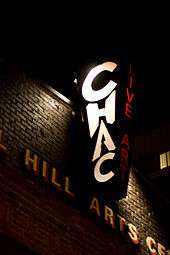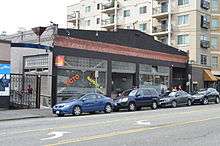Capitol Hill Arts Center
Capitol Hill Arts Center, also known by its acronym CHAC (pronounced "shack"), was a performing arts center located in the Capitol Hill neighborhood of Seattle, Washington. CHAC operated two performance spaces in the building, most widely known for its theatre.


The center was founded in 2002 by Matthew Kwatinetz. CHAC was acknowledged as producing some of the most exciting theatre in Seattle:[1] from Bertolt Brecht's The Resistible Rise of Arturo Ui and Clifford Odets' Waiting for Lefty to the Pacific Northwest premiere of Dario Fo's Archangels Don't Play Pinball.

On the evening of Friday, March 24, 2006, CHAC was the venue of a zombie-themed rave called "Better Off Undead". Attendees of an afterparty after that rave were the victims of the Capitol Hill massacre. By nearly all accounts, CHAC itself had excellent security at the rave, and the only connection of the massacre to the rave was that the perpetrator and the victims attended the rave, and that one of the victims invited the perpetrator to the afterparty.[2][3]
CHAC closed in 2007.
Notes
- Brendan Kiley, What's CHAC Got to Do With It?, The Stranger, Mar 30 - Apr 5, 2006. Accessed 8 April 2006.
- Angela Galloway and D. Parvaz, No rave crackdown coming, Seattle Post-Intelligencer, March 30, 2006. Accessed 7 April 2006.
- Josh Feit and Dan Savage, Raving Mad, The Stranger, Mar 30 - Apr 5, 2006. Accessed 7 April 2006.